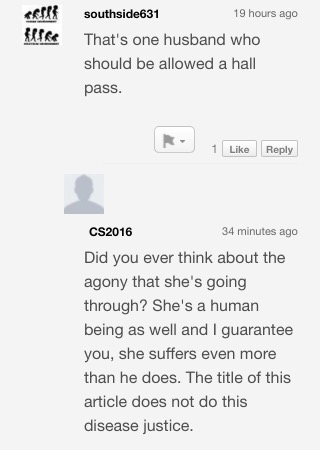So, 20 mins on the cycling bike just before 12am.
Late and not the workout I wanted, but I got it done.
So, 20 mins on the cycling bike just before 12am.
Late and not the workout I wanted, but I got it done.
We had fantastic 1st & 2nd MIND-BODY STRATEGIES FOR HYPERMOBILITY AND CHRONIC PAIN classes!
Thank you to everyone who came out! A follow-up email including information shared in the both classes will be sent soon. Promise.

Our 3rd class will focus on the mindfulness for hypermobility study that was conducted at NIH a few years ago, John Kabat-Zinn’s Mindfulness program, and will include a 30 mins restorative yoga practice.
All levels welcome!
This series of 4 classes are being held at The Mindfulness Center in Bethesda, MD.
Classes begin at 1:30pm.
Address for The Mindfulness Center:
4963 Elm St., Suite 100. Bethesda, MD 20814 (Above the Wells Fargo Bank)
We have several people registered, which is great! If you are already registered or are interested in joining us tomorrow or for our final class in this series on December 2nd, here are a few suggestions to help ensure your safety and comfort:
– If you have a yoga mat, you are welcome to bring it. However, The Mindfulness Center has plenty. I often recommend using two mats for more cushioning.
– Wear comfortable clothing. Even though it’s cooler outside, it can get warmer in the studio from the sun coming in the windows. Layers are best.
– The Mindfulness Center has props and blankets, but if you are more sensitive, you may want to bring your own blanket for our restorative yoga practice.

– Hydrate prior to coming and eat light meal. There’s nothing worse than feeling too full, sick or having a GI reaction to something you are, right in the middle of something you really wanted to do. Or, if you are moving around a bit more than normal.
– There are plenty of great places that offer healthy, sensitive diet friendly options to grab a snack or lunch afterwards (or before).
– There is a parking garage on the opposite side of the street as The Mindfulness Center. There’s also street parking and The Library parking lot off of Arlington Age usually has plenty of parking. Parking at the Library does require a 1-2 block short walk.
For those who could not join us any of the 4 mind-body classes, we are discussing additional days and times to offer both classes and support small group meetings once this initial series of classes is over. Our smaller support group-type classes would be based on the same mind-body principles, but would be held weekly for a certain number of weeks and would include education, support group discussion, gentle movement and mindfulness practices – both virtually and in person.
Click the link below to read details on how to register, or click on the workshops/events tab on our Facebook page.
Go to www.edswellness.org/index.php/learn-with-eds-wellness/ to register for our class on Friday, or future classes.
You can also download the EDS Wellness App by clicking on this link – appsto.re/us/N7zbfb.i (it’s free!) or search EDS Wellness in the iTunes App store.
Also available on Google Play!
The link below includes additional details on EDS Wellness upcoming events and important announcements!
Questions? Please email info@edswellness.org
Additionally, the EDS Wellness HelpLine is Live!
You can make HelpLine Appointments through the EDS Wellness App or go to – edswellness.org/index.php/make-an-appointment/
To read our post from today, go to EDSWellness.org/index.php/2016/11/18/our-3rd-mind-body-strategies-for-hypermobility-and-chronic-pain-class-is-friday-november-18th-at-130pm/
We look forward to seeing those who are joining us tomorrow!
I just shared this article (http://www.foxnews.com/health/2016/11/15/minnesota-woman-allergic-to-husband.html#) on Mast Cell Activation Syndrome (MCAS) written by FoxNews on my personal Facebook page. Considering I published Dr. Afrin’s book on MCAS called ‘Never Bet Against Occam: Mast Cell Activation Disease and the Modern Epidemics of Chronic Illness and Medical Complexity‘ (Dr. Afrin was the “online physician” who was quoted in the article), I can say without a doubt that MCAS is more than real, and can be incredibly disabling, not to mention isolating. It can also cause death.
People are dying because of constant misdiagnosis, medical errors that can be avoided, and because of ignorance such as the comments in the images below.
Dr. Afrin’s book currently has 92 five star reviews on Amazon.com — and for a good reason. His book is doing so well because MCAS is far from another “liberal disease” that people can use to get disability. Dr. Afrin is also anything but an “online” physician. He is one of the few physicians in the world that MCAS patients have on their side to help them – who believe them.
Despite any disagreement in what exactly MCAS is or what causes it between the few physicians who devote their lives to researching, diagnosing and caring for MCAS patients (or patients with another type of Mast Cell Activation Disorder), I’m can bet that all would agree that MCAS is far from “only in their patients’ head.” And I can almost guarantee that all would state that beliefs and comments like the ones in the pictures below are a huge part of the reason why so many patients get worse.
I couldn’t be more disgusted. These comments are more than horrific – not just because of the lack of belief in the validity of this condition, but because of the sexist and demeaning nature. And we wonder why chronic illnesses are on the rise – stress, isolation, lack of support, and proper care propels the chronic illness epidemic exponentially.
And dare I say that treating women like an object vs. human being, that their worth is dependent on how “healthy” they are or based on if they can give-up some “lovin” or not, only adds to the chronic illness spiral. And yes, I know it goes both ways – I’ve seen it hundreds of times already.
The evidence-based truth is that MCAS is comorbid to countless chronic medical illnesses, cancers, autonomic dysfunction (Dysautonomia and POTS) and hypermobility syndromes, such as Ehlers-Danlos syndrome.
My hope is that more people take the time to actually read the thousands of medical research articles, watch a video on YouTube of a presentation, read through presentation slides, or a book on a specific condition, before making ignorant and judgmental comments. Just because you can’t “see” something, or it defies the medical information that you are currently aware of, does not mean that it doesn’t exist. It also doesn’t mean it’s “all in someone’s head.” More than likely, it’s far from it. However, the medical world has yet to understand it, or disseminate updated information to the broader medical community — and to the lay public, such as the intelligent readers who commented on this article. Of course, disseminating information doesn’t guarantee people will listen or believe it to be fact.
What I do know, is that if research is done and the time is taken to learn, most people realize how very real MCAS and other “liberal diagnosis” are. They would possibly also realize that their mom, daughter, wife, brother or grandfather most likely has it. And maybe they even have MCAS themselves.
But I’m sure we would then hear, “but it’s different, though. He/she/I’m really suffering (or, he/she/I’m not as bad). It’s not the same as the woman/man in ______ article – this is real.”
Yeah, just like the rest of us.
The sad part is that I only read the comments because they would be from MCAS patients or those who think they may have it. Each and every comment other than a few was derogatory, demeaning and sexist.
Disgusting.
http://www.foxnews.com/health/2016/11/15/minnesota-woman-allergic-to-husband.html#


















Emotional Aromatherapy workshop at The Mindfulness Center!
“Emotional Aromatherapy- Empower yourself to live Healthfully AND Happily!
Essential oils have been used for thousands of years for their healing properties for mind and body. Learn how aromatherapy using pure, therapeutic grade essential oils has the power to affect our brains and biochemistry to promote feelings of peace, cheer, motivation, passion, and forgiveness. Join Jessie Taylor and Dr. Tina Lightner-Morris to experience the oils for yourself and embrace a healthier, happier you!”
‘For these people, hypermobility may even be considered an advantage, for example, athletes, gymnasts, dancers and musicians might specifically be selected because of their extra range of movement. For a small percentage of the population, however, instead of being advantageous, hypermobility may be associated with joint and ligament injuries, pain, fatigue and other symptoms’ (Hakim A – www.hypermobility.org).
The exact cause(s) of joint hypermobility is unknown; however, “loose joints” are believed to be caused by various mutations to one or more of the components that help build our connective tissues. Research is suggesting that both genetic and epigenetic factors play a role in the presentation signs and symptoms, as well as the severity of issues associated with joint hypermobility. In some individuals, joint hypermobility is an indication of a type of hypermobility syndrome, such as Ehlers-Danlos syndrome – hypermobility type (EDS-HT). Hypermobility syndromes are classified as heritable connective tissue disorders or connective tissue diseases. There are several types of hypermobility syndromes. Ehlers-Danlos syndrome (EDS) is a type of hypermobility syndrome and Ehlers-Danlos syndrome – Hypermobility Type, is a type of EDS. EDS is a group of heritable connective tissue disorders caused by mutations in either the structure or function of collagen – the most abundant protein in the body. While research is still searching to understand the complexities of EDS, it is certain that most forms of EDS can cause a broad spectrum of multisystemic dysfunction. Additionally, some EDS researchers speculate that Ehlers-Danlos syndrome – Hypermobility Type may be the most prevalent connective tissue disorder in the world.
‘Experts estimate that up to 10% of the general population may have some degree of hypermobility, with women affected about three times more often than men. Most hypermobile people do not develop any problems from their loose joints, but some suffer chronic pain and other symptoms. Those who do experience chronic joint pain and other symptoms related to their hypermobility or to the looseness of other tissues that often accompanies hypermobility have a condition called joint hypermobility syndrome (JHS).’ (Pocinki A – http://www.dynakids.org/Documents/hypermobility.pdf)
Presently, it’s widely accepted that Benign Joint Hypermobility Syndrome (BJHS), Joint Hypermobility Syndrome (JHS), and Hypermobility Syndrome (HMS) are one in the same condition. Some EDS and hypermobility researchers believe that BJHS/JHS/HMS and EDS-HT are one in the same condition entirely. Others believe that the two conditions are “allelic,” meaning “different mutations at the same locus cause a similar phenotype” (https://en.wikipedia.org/wiki/Allelic_heterogeneity) and are clinically indistinguishable. An easier explanation may be that it doesn’t matter how a gene is interrupted (mutated), but that it can be interrupted (mutated) a few ways. These different gene interruptions (mutations) may cause a similar presentation of symptoms.
It is thought that many people who were first diagnosed with (BJHS), (JHS), (HMS), or “just loose joints,” later receive diagnosed with a type of Ehlers-Danlos syndrome – Hypermobility Type (EDS-HT). However, some are re-diagnosed with a different kind of hypermobility syndrome, for example, another form of EDS, Marfan syndrome or connective tissue diseases such as Lupus, Rheumatoid Arthritis, or even Fibromyalgia. The first sign or symptom of EDS-HT is usually joint hypermobility, and many people do not experience issues with their loose joints until later in life, for example during puberty, if at all. On the other hand, some individuals with EDS-HT have multisystemic problems from birth.
People with hypermobility syndromes, including EDS-HT, have symptoms ranging from an incredibly broad scale of severity, in addition to hypermobile joints such as the knees, shoulders, neck, ankles, fingers, wrists, the pelvis, the jaw, and more. Because components of connective tissue can be found everywhere in our bodies, not only supporting our joints, it is possible that every system in the body can be affected. Confusion and misdiagnosis have only increased because not one person with hypermobility presents the same – EDS-HT is especially subjective. Awareness, education, and early intervention are critical. Over-medicalization, or lack of proactive approaches to living well with joint hypermobility, can cause damage to the connective tissues, progress multi-systemic dysfunction, and cause life-long and additional trauma, pain and suffering.
A perfect example is described on the website for the EDS 2016 International Symposium (eds2016.org) – ‘If one builds a house with inadequate materials, perhaps half [of] the necessary wood or aluminum nails, one knows there will be problems. Some problems can be anticipated, but because those materials were used everywhere and aren’t necessarily visible, one may be surprised. Being built out of a protein that doesn’t behave the way it should result in widespread difficulties in a wide range of severities, even in places one wouldn’t think are connected until one realizes that collagen is used there, too.’
While there is still so much more discover and understand about joint hypermobility and Hypermobility syndromes, such as Ehlers-Danlos syndrome – Hypermobility Type (EDS-HT), what is recognized by those within the broader hypermobility community, but has yet to be fully acknowledged and accepted by the entire medical field, is that EDS-HT is a multisystemic condition(s) that is much more than “just the joints.”
Symptoms / Comorbidities of Joint Hypermobility syndrome/Ehlers-Danlos syndrome – Hypermobility Type often includes, but are not limited to:
– joint hypermobility (not to be confused with flexibility, as people can be hypermobile without being flexible and vice versa—hypermobile joints are loose or unstable and slip or dislocate easily)
– complete dislocations and partial dislocations (known as subluxations)
– prone to bruising easily and some may have tissue fragility
– vascular complications, such as pelvic congestion syndrome
– bladder problems (i.e. Interstitial Cystitis, etc.)
– poor wound healing
– abnormal scarring
– chronic fatigue
– chronic pain
– cardiac abnormalities
– foot deformities
– TMJ dysfunction
– low muscle tone
– hernias
– early osteoarthritis and degenerative discs
– various GI problems and allergies
– chronic headaches
– eye problems
– Dysautonomia (i.e. POTS)
– dental issues
– chronic pelvic pain in women and various gynecological issues
– congenital defects of the spine (including the head, neck, and the entire spinal column)
– ADD/ADHD
– learning disabilities
– Sensory Processing issues
– Autism
– Neuropathy
– circulatory issues
– and much more.
“The first step necessary to increase awareness regarding JHS/EDS-HT is to shift attention from the overall musculoskeletal /cutaneous picture to the chronology of symptom development, transition, and evolution.”
– M Castori et al. Am J Med Gen 2013
Learn more – ‘What is Hypermobility Syndrome?’
***Published with permission from EDS Wellness. Content is copyright protected.***
A few pictures from our 2nd Mind-Body class for Hypermobility today.
We discussed wrist, neck and ankle issues, how to practice yoga safely with Hypermobility, proper form in specific poses, things to look for when practicing yoga, the use of props, and finished with a gentle flow yoga practice.
Professional pictures by Christina Maldonado Photography